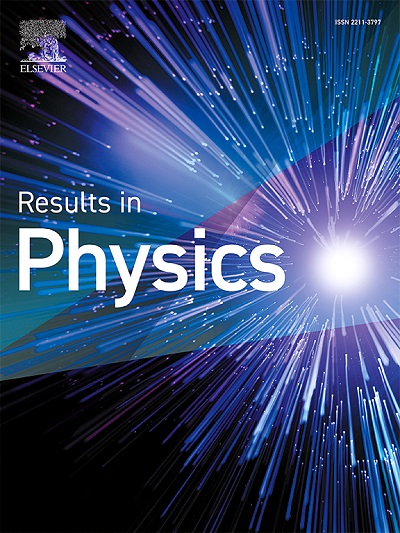Highly sensitive simultaneous measurement of refractive index and its changes using a photonic crystal biosensor with coupled resonators
IF 4.4
2区 物理与天体物理
Q2 MATERIALS SCIENCE, MULTIDISCIPLINARY
引用次数: 0
Abstract
The paper proposes a novel optical sensor based on one-dimensional binary (SiO2/Si) photonic crystals (PC) with two defect layers to measure the refractive index of the sensing analyte directly and in real-time. Two coupled modes are observed in the bandgap of the PC which is affected by the defect layer separation and the difference between the refractive index of analyte and reference materials. The sensitivities of the coupled modes increase as the two defect layers get closer and the threshold distance of dual defect layers for using the advantage of coupled modes is determined in the paper. The sensitivities and Q factors of these two coupled modes are different in most conditions which highlights the potential of utilizing one of the coupled modes with higher sensitivity for sensing applications of the specific material. Furthermore, accurate and real-time measurements of the analyte refractive index are possible with these coupled modes. This capability enhances the performance of optical sensors based on photonic crystals, allowing for precise measurements in various environments. The proposed optical sensor demonstrates promising features for industrial, diagnostic, and medical applications due to its simplicity in production and capability for multiple simultaneous analyte measurements on a single chip.
利用耦合谐振器的光子晶体生物传感器对折射率及其变化进行高灵敏度同时测量
本文提出了一种基于具有两缺陷层的一维二元(SiO2/Si)光子晶体(PC)的新型光学传感器,可直接实时测量被测物的折射率。在PC的带隙中观察到两种耦合模式,这两种耦合模式受缺陷层分离和分析物与参比物折射率差的影响。耦合模的灵敏度随两缺陷层的距离越近而增加,并确定了利用耦合模优势的双缺陷层的阈值距离。这两种耦合模式的灵敏度和Q因子在大多数情况下是不同的,这突出了利用一种具有较高灵敏度的耦合模式用于特定材料的传感应用的潜力。此外,利用这些耦合模式可以精确和实时地测量分析物的折射率。这种能力增强了基于光子晶体的光学传感器的性能,允许在各种环境中进行精确测量。由于其生产简单,并且能够在单个芯片上同时进行多个分析物测量,因此所提出的光学传感器在工业,诊断和医疗应用中具有很好的特性。
本文章由计算机程序翻译,如有差异,请以英文原文为准。
求助全文
约1分钟内获得全文
求助全文
来源期刊

Results in Physics
MATERIALS SCIENCE, MULTIDISCIPLINARYPHYSIC-PHYSICS, MULTIDISCIPLINARY
CiteScore
8.70
自引率
9.40%
发文量
754
审稿时长
50 days
期刊介绍:
Results in Physics is an open access journal offering authors the opportunity to publish in all fundamental and interdisciplinary areas of physics, materials science, and applied physics. Papers of a theoretical, computational, and experimental nature are all welcome. Results in Physics accepts papers that are scientifically sound, technically correct and provide valuable new knowledge to the physics community. Topics such as three-dimensional flow and magnetohydrodynamics are not within the scope of Results in Physics.
Results in Physics welcomes three types of papers:
1. Full research papers
2. Microarticles: very short papers, no longer than two pages. They may consist of a single, but well-described piece of information, such as:
- Data and/or a plot plus a description
- Description of a new method or instrumentation
- Negative results
- Concept or design study
3. Letters to the Editor: Letters discussing a recent article published in Results in Physics are welcome. These are objective, constructive, or educational critiques of papers published in Results in Physics. Accepted letters will be sent to the author of the original paper for a response. Each letter and response is published together. Letters should be received within 8 weeks of the article''s publication. They should not exceed 750 words of text and 10 references.
 求助内容:
求助内容: 应助结果提醒方式:
应助结果提醒方式:


